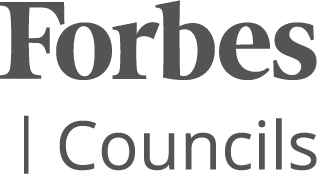
Trying Times: How Payments Solutions Can Adapt To Buyer Behavior
Economists are divided on whether or not a recession is imminent, but according to a recent Morning Consult survey, almost half of consumers believe the U.S. is already in a recession, and another quarter believe a downturn will occur within a year. Opinions on the ground matter and can even become self-fulfilling prophecies.
Pessimism about the economy and related worries about job stability and rising inflation rates naturally impact buyer behavior. However, like everything else in the post-pandemic period so far, predicting exactly how it will all play out is complicated—not just for economists but also for payments solutions providers and the customers they serve.
Recession fears mean consumers will spend less overall and are likely to shift dollars away from discretionary spending and toward necessities. For example, consumers might squeeze in a single dental appointment rather than two. They might still buy an item they want but don’t necessarily need, but maybe they’ll compromise with a trade-down, such as swapping a luxury handbag from Louis Vuitton for a more moderately priced model from H&M.
On the other hand, due to pent-up demand, discretionary spending remains strong in some sectors, which is a complicating factor for prognosticators. Payments providers and the businesses they serve will need to shift their strategies to adjust and account for changing buyer behavior. In addition, providers have an important role to play in guiding their clients as they navigate economic volatility. Here’s a closer look at how you can do both.
Payments solutions providers face challenges—and embrace opportunities.
For payments solutions providers, the current economy is a mixed bag: Rising prices resulting from sustained inflation provide increased economics from individual transactions, but lower volume overall is not healthy and often outweighs ticket size and translates into less revenue. As a result, payments providers are scrutinizing budgets, and some have reduced head count. Others are focusing on channels that are more reliable in a recessionary environment, such as healthcare or utilities, and de-emphasizing or even abandoning others. Solutions providers with higher debt loads or a need for capital to operate are feeling the pinch the most—but everyone is preparing.
All of that said, there are still opportunities. During these times, businesses are looking for ways to maintain wallet share by improving the customer experience, and payments solutions can help them achieve that goal. In my experience in the industry, the best payments solutions offer a value proposition that helps clients drive not only revenue (with a better consumer experience) but also internal efficiencies through automation and embedded reconciliation, all while speeding up cashflow via automating or digitizing the accounts receivable processes. This makes the business more effective when cash is tight, helping to drive sales.
Playing offense when others are playing defense has advantages.
Payments solutions providers can help customers navigate uncertain times by providing guidance that can help merchants, healthcare providers, hospitality businesses, software vendors, B2B clients, etc., deliver better experiences for buyers and consumers. I advise payments providers to tell customers this is not the time to retreat on amazing customer-facing experiences—now is when you should be advising businesses to set themselves apart with easy UX enhancements, enabling more sales and boosting retention.
We can also guide customers as they evaluate their options, pointing out cost-cutting alternatives like exploring lower-cost mediums, eliminating expenses and resources devoted to peripherals, and generally focusing on core competencies. Help customers like software solutions see that partnering with a sophisticated payments solutions provider is a great way to keep their focus on their core business while enabling the type of modern commerce experience their clients demand.
I have had the opportunity to manage teams through a few different economic cycles, including the dot-com bubble and the financial crisis. I found that if managed properly, you can come out on the other side a stronger and more focused business, and the payments sector is typically the first to bounce back as the economy rebounds. While it’s impossible to predict what will happen in the coming months, so far there’s little indication that a downturn this year will be deeper than the most recent historical precedents. So, while some level of belt-tightening makes sense during a period of uncertainty, drastic action isn’t yet warranted.
It’s also worth keeping in mind that some of the most well-known brands in the world were founded during bumpy economic periods. That includes Disney, which launched during the Great Depression; Microsoft, founded during the mid-1970s stagflation crisis; and Uber, which hit the road during the Great Recession. As those scrappy startups showed, at a time when other businesses are playing defense, a company on offense can stand out.
The same is true now, both for payments solutions providers and for the businesses they empower to provide a better experience for their clients. Like it or not, we live in challenging times, and while it’s important to prepare for the challenges, it’s also crucial to take advantage of the opportunities.
By Forbes Council | https://www.forbes.com/sites/forbesbusinesscouncil/2023/04/20/trying-times-how-payments-solutions-can-adapt-to-buyer-behavior/?sh=656effc512e8

